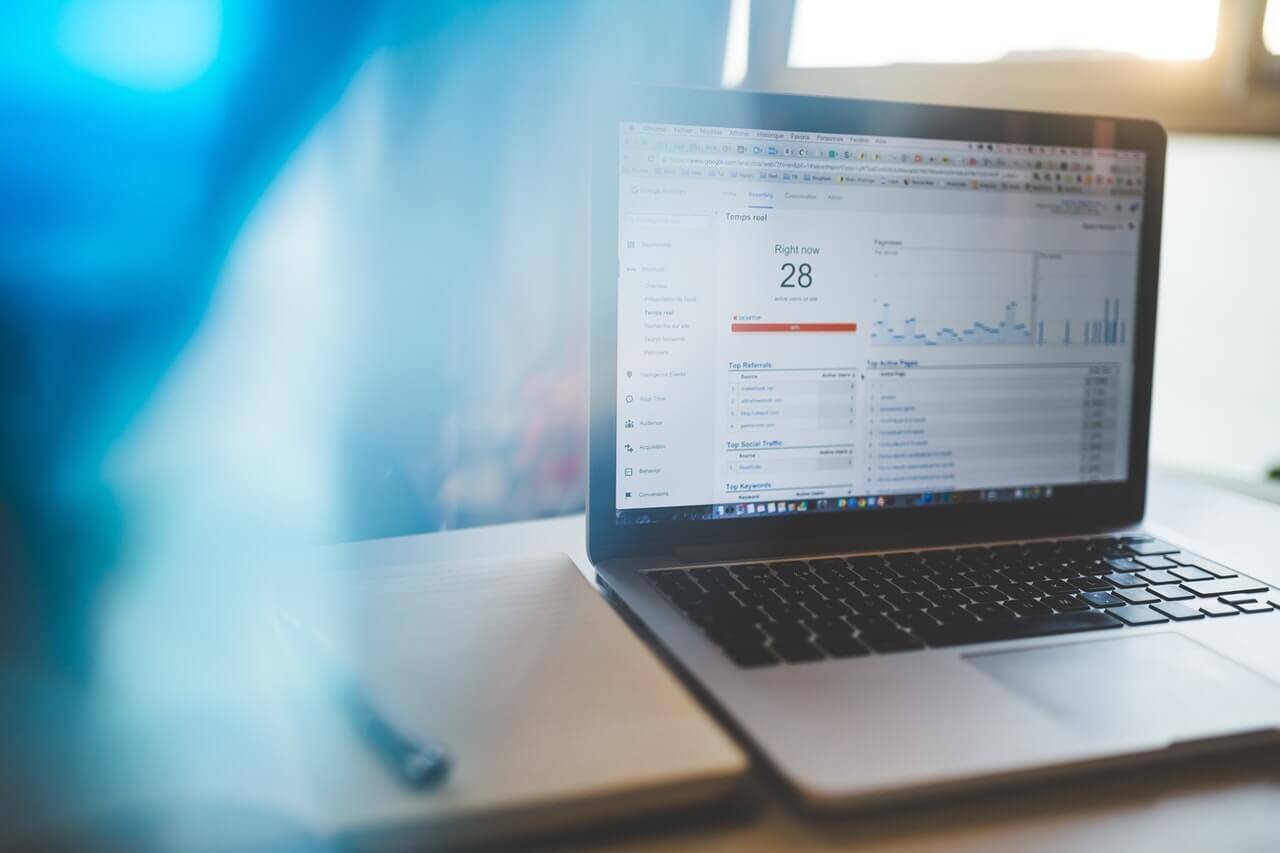The world we live in runs on data that we can use to make better decisions. In the business industry, you have access to different data forms irrespective of your niche.
What you do with available data and how you utilize it to create solutions is vital to the success of a business organization.
Business intelligence and data analytics are the primary ways you can utilize data. However, we find that students with interests in data-driven initiatives often use both terms interchangeably. Although they both depend on data, business intelligence and data analytics are not the same.
Business intelligence (BI) describes past occurrences using historical data. By extension, the exploration of historical data can be a crucial tool for making future business decisions. Conversely, data analytics uses elements of data science to predict future scenarios.
Here, we’ll highlight the differences between business intelligence vs. data analytics. We’ll also provide examples and in-depth explanations to answer all your questions about data analytics and business intelligence.
What Is Business Intelligence?
Business intelligence means using data to make excellent business decisions. It’s the total of technologies, practices, and software that enhance the collection, sorting, analysis, integration, and presentation of information.
From the above, business intelligence combines both complex and straightforward data processes to influence business decisions. Some of the fundamental tenets of business intelligence include data mining, business market analysis, and data visualization. These tools will help business managers make informed decisions based on facts and figures.
How does business intelligence works?
Business intelligence exists to eliminate guesswork and gut feelings while making crucial business decisions. To do that, business organizations will have to sift through information from data sources, including supply chain data, marketing analytics, and sales dashboards.
Business intelligence works by bringing these varied data sources under a single window to provide real-time updates, analysis, and reporting. Here are the primary steps that go into business intelligence:
- Mining raw data from available databases.
- Sorting and data analysis.
- Turning data into easily understood visual forms like graphs.
- Sharing data analysis results with team members to make decisions.
- Comparing and contrasting performances due to data-influenced decisions.
Examples of business intelligence
Business intelligence has applications in different business operations. Below are some examples:
Customer interaction
Companies that own call centers can enjoy the advantages of business intelligence. Customer interaction analytics can help companies monitor calls and identify phrases that encourage successful calls.
Business managers will get real-time access to call center statistics highlighting how top agents are making successful calls. Hence, they can duplicate audio patterns and phrases to increase success rates.
Website traffic
Google Analytics is one of the most popular business intelligence tools. Over 2.5 million websites in the United States use Google Analytics. This business intelligence tool provides a visual analysis of the following metrics:
- Time spent on page
- Type of traffic
- Bounce rate
- Web page performance
- Numbers of users and sessions
With the information from these metrics, business managers can make informed decisions about website tweaks, web content updates, and more.

Sales forecasting
Sales forecasting is an important aspect of business planning and strategy. It involves predicting future sales trends and estimating the revenue a company can generate over a certain period. Sales forecasting is typically based on historical sales data, market trends, and other relevant factors.
It can help businesses to make informed decisions about inventory management, production planning, and marketing strategies. Accurate sales forecasting is essential for businesses to stay competitive and profitable in today’s fast-paced market.
The future of business intelligence
Making business decisions with accurate figures in mind will reduce mistakes and the wastage of resources. As a result, the future of business intelligence is indeed very bright in every industry.
You can expect automation and collaboration software to integrate with business intelligence tools for faster results. The future of business intelligence is intertwined with artificial intelligence. Thanks to AI, BI tools are expected to become more intuitive, providing answers to queries differently based on the unique needs of the analyst.
What Is Data Analytics?
Data analytics is analyzing raw data sets to uncover patterns, find trends, answer questions and isolate valuable insights. As a broad field, data analytics involves the use of different techniques and specialized software. It makes the most of machine learning and automation software to turn raw data into actionable information.
The application of data analytics can help organizations understand their market, evaluate marketing campaigns, create relevant content and develop better products.
How does data analytics work?
There are various methods and processes under data analytics.
Data mining
Some experts refer to data mining as text analysis. In this process, you’re trying to pick a pattern or trend from bulk data.
Descriptive analysis
The descriptive analysis provides insight into past performances. For any situation, it answers the question — what happened?
Diagnostic analysis
This type of analysis looks to uncover the problem in a system.
Prediction analysis
Prediction analysis looks to answer questions about the future. It analyses historical trends to predict whether or not they’ll happen again in the future. Prediction analysis makes use of machine learning methods like decision trees, neural networks, and regression.
Prescriptive analysis
Prescriptive data analysis uses previous research to analyze and proffer a solution.

Examples of data analytics
Since data analytics is a broad field, it offers applications in varying areas:
✅ Request information on BAU's programs TODAY!
Health
The Food and Drug Administration uses data analytics to improve the situation of food-related illnesses. By deploying big data tech across labs in the country, the FDA can study patterns relating to food-borne diseases. Thanks to real-time analysis, the FDA can respond faster to curb the spread of contaminated food products.
Preventing hacks
Data analytics can help cybersecurity professionals protect businesses from hackers. By analyzing data sets, experts can detect cyber threats easily and create strategies for dealing with these threats.
Product Updates
Prescriptive analysis of data sets can give product developers valuable insights into what customers want. Data analytics offers a closer look at customer budgets, features that are most important to customers, and purchasing behaviors. With this info, product managers can update current product offerings or design new products to cater to customer needs.
The future of data analytics
Experts say the data analytics industry will reach revenues of over $250 billion by the year 2022, hence, pursuing a career in this field can be highly beneficial. The next few years, you can expect a more comprehensive adoption of data analytics by business users. With advancements in machine learning and artificial intelligence, companies will have to rely more on large data networks to provide specialized services.
Final Thoughts: Business Intelligence vs. Data Analytics
Business intelligence and data analysis both depend heavily on data for success. Business intelligence focuses on past occurrences useful to making future decisions. Data analysis uses algorithms to analyze data sets.
You can first use data analytics to sort, clean, and analyze data sets. Then, use business intelligence to make use of the analyzed data based on facts and previous experience. Incorporating both in your business strategy will help you make better-informed decisions and achieve better results. As for the degree, you can choose whichever you believe leads you closer to your dream career. However, you can always get a Master’s degree in Big Data Analytics.
Frequently Asked Questions (FAQs)
What is the difference between business intelligence and analytics?
Business intelligence is concerned with generating reports and dashboards to provide insights and data visualization, while analytics involves using statistical and mathematical methods to analyze data and gain insights.
Does business intelligence include data analytics?
Business intelligence (BI) is a process that involves data analytics and business analytics as integral components. However, BI utilizes these components only as fragments of the entire operation. BI aims to assist users in arriving at conclusions based on the analysis of data.
Who earns more business analyst or business intelligence?
Although the job roles of business intelligence analyst and business analyst are similar, the average salary of a business intelligence analyst is a little higher. However, there are various factors that can impact the wages, such as the type of work and level of experience.
What is the main purpose of business intelligence?
The aim of business intelligence is to assist in enhancing and guiding business decisions through simplifying data interpretation and action. BI encompasses gathering and presenting data, as well as the computer programs utilized to execute such processes.
What qualifications do I need to be a business analyst?
To work as a business analyst, it is typically necessary to have at least a bachelor’s degree in a field such as business, finance, economics, or information technology. Some positions also prefer or require a master’s degree, particularly for more advanced or specialized roles.










